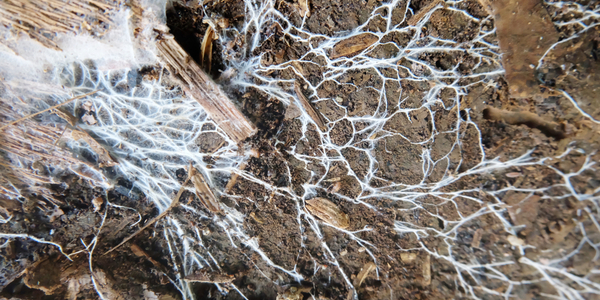Fungi and agriculture are natural partners. Fungi were some of the first complex life forms on land, mining rocks for mineral nourishment, slowly turning them into what would become soil. In the Late Ordovician era, or about 480 million years ago, they formed a symbiotic relationship with liverworts, the earliest plants. Fungi in your soil profile means greater mineralization of and access to nutrients for your crop, as well as broader access to water.
Fungi are the most underappreciated kingdom of the natural world. In May 2019, scientists reported the discovery of a fossilized fungus in the Canadian Artic that had grown on land a billion years ago, well before plants were living on land. Since then, fungi have been integral to the development of life on Earth — neither land plants nor terrestrial animals would exist without them.
Fungi were responsible for moving marginal plants that were mostly stuck on the water’s edge inland to become large forests and entire ecosystems. The fungi provided essential minerals for land plants that allowed them to spread and turn the planet green, altering the composition of the atmosphere.
Roughly 65 million years ago, an asteroid strike would wipe out 70 percent of all life on Earth. But it wouldn’t happen all at once. The lack of sunlight that followed the asteroid impact meant that the plant life that wasn’t incinerated on impact would die and start to decay rapidly, creating the conditions for fungi to consume the decaying matter and multiply. Without fungi to aid in decomposition, all life in the forest would soon have been buried under a mountain of dead plant matter.
Fungi breakdown dead, organic matter and by doing that they release nutrients; those nutrients are then made available for plants to carry on growing. In short, fungi eat death and, in doing so, create new life. The entire web of life is connected through fungi.
Andaman Ag sells an array of naturally derived products that promote fungal development and expansion. In drought and heat stress conditions, fungal expansion can be extremely helpful in supporting crop health offering a buffer to challenging conditions.
Given the challenges we’re facing with drought and water issues, Andaman Ag also sells AquaVantage, a bio-degradable natural starch-based polymerized molecule that hold 500 times its original weight in water and water-soluble nutrients. The product forms hydrogels that slowly release the held moisture as plants need it. It’s a versatile product that, for example, can be added to berm applications mixed with compost, used at transplanting or seed furrows. AquaVantage can be used a transition product, helping to immediately restore your soils’ capability to hold water while our other products work to build soil structure for the long term.
Andaman Ag is committed to Improving Agriculture from the Ground Up and we’re always available to talk to you about your concerns and our recommendations. We have tried and tested crop programs and are always on the lookout for new methods and products that can better serve our growers.





